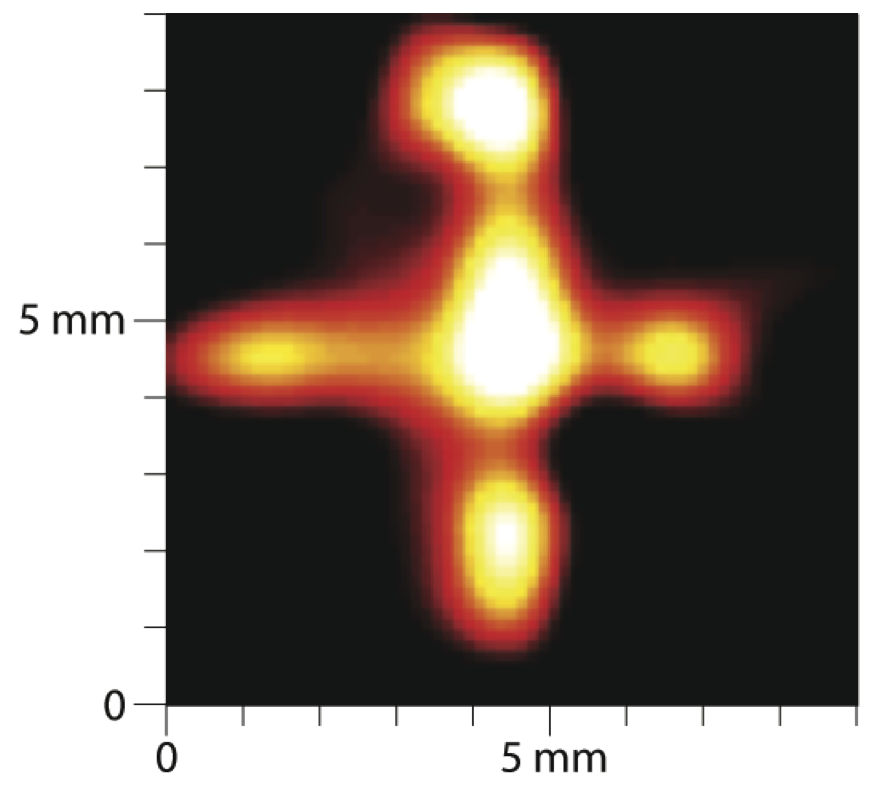 Photochemically induced dynamic nuclear polarization, or Photo-CIDNP, has traditionally been used to to improve the sensitivity of magnetic resonance experiments of biological materials and aid in the elucidation of protein structures. Photo-CIDNP starts with optical excitation into an electronic triplet state of some chemical species P, followed by spin conserving single electron transfer to some other chemical Q, creating what is known as a triplet radical pair. This radical pair can then either undergo triplet to singlet conversion followed by a reverse electron transfer to regenerate grounds state products, or diffuse apart and react with other chemicals in solution. The relative yields of these two processes is modulated by the nuclear spin states of any protons in the pair which enjoys couplings to the excited electron. This allows CIDNP to be used to build up magnetization in either P or its reaction products.
Photochemically induced dynamic nuclear polarization, or Photo-CIDNP, has traditionally been used to to improve the sensitivity of magnetic resonance experiments of biological materials and aid in the elucidation of protein structures. Photo-CIDNP starts with optical excitation into an electronic triplet state of some chemical species P, followed by spin conserving single electron transfer to some other chemical Q, creating what is known as a triplet radical pair. This radical pair can then either undergo triplet to singlet conversion followed by a reverse electron transfer to regenerate grounds state products, or diffuse apart and react with other chemicals in solution. The relative yields of these two processes is modulated by the nuclear spin states of any protons in the pair which enjoys couplings to the excited electron. This allows CIDNP to be used to build up magnetization in either P or its reaction products.
 In our lab we have successfully used this technique in a novel way to encode spatial information. Using the fact that the chemical reaction responsible for the non equilibrium magnetization seen in CIDNP is initiated by light we can perform the encoding at diffraction limited resolution by shaping the light with which we irradiate the sample. Traditionally, spatial encoding is achieved by the use of magnetic field gradients, which often have to be applied for up to several milliseconds in a successful experiment. In contrast, a laser can be turned on or off effectively instantaneously, providing a potentially large increase in temporal resolution.
In our lab we have successfully used this technique in a novel way to encode spatial information. Using the fact that the chemical reaction responsible for the non equilibrium magnetization seen in CIDNP is initiated by light we can perform the encoding at diffraction limited resolution by shaping the light with which we irradiate the sample. Traditionally, spatial encoding is achieved by the use of magnetic field gradients, which often have to be applied for up to several milliseconds in a successful experiment. In contrast, a laser can be turned on or off effectively instantaneously, providing a potentially large increase in temporal resolution.
Current Members
John Blanchard
Jonathan King
Tobias Sjolander
Collaborators
Dmitry Budker (UC Berkeley, Physics)
